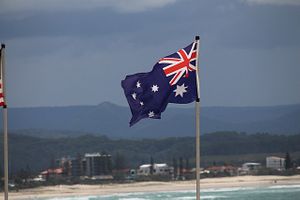The dominant theme within Australian politics at the moment is the deep disarray within the governing conservative Liberal Party. The party’s internal divisions have been fermenting for some time, but the removal of Malcolm Turnbull from the prime ministership in August not only sent the party into open civil warfare, but triggered a series of strange decisions, and increasingly unhinged behavior. All signs point to the party now being held in such suspicion by the public that they are heading toward a major defeat at the next election, likely to be held in May.
The first sign of public disgruntlement with the party was the by-election to replace Turnbull, who left Parliament immediately after being removed from the prime ministership. That electorate, Wentworth, is the wealthiest in the country and had been won by the Liberal Party at every election since the party was formed in 1944. Yet a swing of almost 20 percent against the party saw the seat won by an independent candidate. The winning candidate campaigned strongly on issues of greater action on climate change and better treatment for refugees and asylum seekers currently being held on Nauru– countering two issues that define the current Liberal Party. (For a look at how this by-election created problems in the bilateral relationship with Indonesia, see my piece in November issue of The Diplomat magazine.)
The second sign came in the late-November election in the state of Victoria, Australia’s second largest state by population. Victoria had been governed by the Labor Party for the past four years, and several months ago it seemed like the Liberal Party had a chance of replacing them. Instead what occurred was a considerable loss for the Liberal Party, particularly notable for large swings against the party in Melbourne’s sprawling eastern suburbs, an area of the country vital to the party if it were to have any hope of winning the forthcoming federal election.
To add to the party’s woes, an MP in the federal parliament quit the party to sit as an independent, citing the Liberal Party’s treatment of women, and claiming that the party had become beholden to the “reactionary right.” Her defection now leaves the party two seats short of a majority in the House of Representatives.
Much of the party’s problems stem from a wider trend that conservative parties in the West are struggling with, as reactionary forces both inside and outside these parties vie for power with their traditionally more sober elements. These forces have overwhelmed the Republican Party in the United States, and gained significant traction in a number of European countries. Yet unlike in some other areas of the world the Liberal Party’s attempts to harness these forces seem to have hit an electoral dead-end.
The worldview of the party now seems to be deep conflict with the reality of the country. Australia is a peaceful, multicultural, liberal (in the broad sense), prosperous, and welcoming place. The Liberal Party has become increasingly negative, resentful, agitated, and insular. Rather than attempt to ease the concerns of people of a conservative disposition, the Liberal Party has instead tried to prey upon those worries, attempting to make people feel more anxious and insecure, rather than less. What is intriguing is that that the public has woken up to this. The Liberal Party is no longer a stabilizing force, but instead is now an agent of instability. So why would people of a conservative disposition — who seek stability and security — vote for such an entity?
In the Victorian election the Liberal Party ran an entirely negative campaign built around issues of “law and order,” and agitated concerns about Melbourne’s population growth. But its campaign slogans of “Make Victoria Safe Again” and “Get Back In Control” were easily mocked and thoroughly dismissed. The Economist’s 2017 Safe Cities Index ranked Melbourne the fifth safest city in the world. Most people understood that the reality of their lives was quite distinct from the rhetoric of the Liberal Party’s campaign. They realize that incidents of crime in Melbourne are limited, and although criminal activity is awful for those who are victims, the public soberly trust that the police and the justice system will do their jobs. Hysterical rhetoric only creates problems, not solutions.
The conventional wisdom of Australian politics is that because voting is compulsory parties cannot just attempt to appeal to their most enthusiastic supporters; they have to find a much broader appeal. This wisdom currently seems completely lost on many within the Liberal Party, who cannot resist fantasizing about and attempting to appeal to a mythical party “base.” Some within the party have begun questioning their approach. Federal Liberal MP Tim Wilson, who spent time engaging with voters during the Victorian election, indicated that voters are rapidly abandoning the party, stating, “They are embarrassed to vote for us.” Another federal MP, Kelly O’Dwyer, bluntly informed the party that the public think they are “homophobic, anti-women, climate-change deniers.”
Since the last stabilizing figure in the Liberal Party, John Howard, lost the 2007 election, the party has struggled to find a figure to who can bridge the party’s disparate worldviews. The Liberal Party’s politicians have continued to extoll a public mantra of “disunity is death,” attempting to fool both the public and themselves into thinking that the party has the ability to remain a stable and coherent organization. At present it seems this faux unity can only bring further disarray. This leaves the party at a crossroads. Does the party have the ability to purge its reactionary elements and realign itself as a responsible governing entity that the public can once again trust? Or will it become the permanent agitated oppositional force that many within party wish it to be?

































